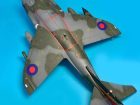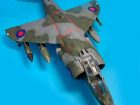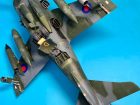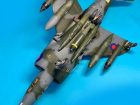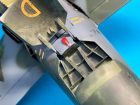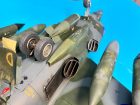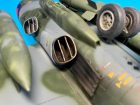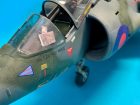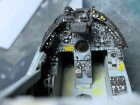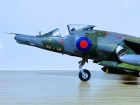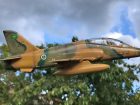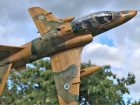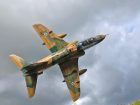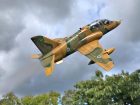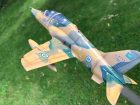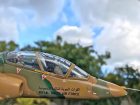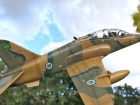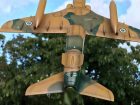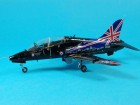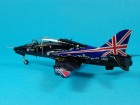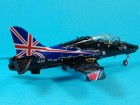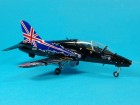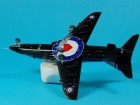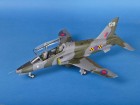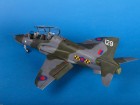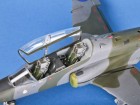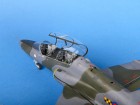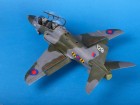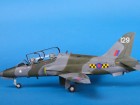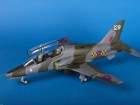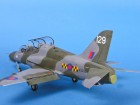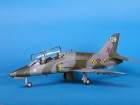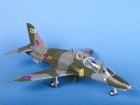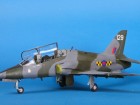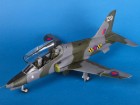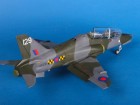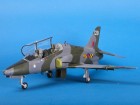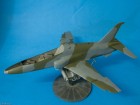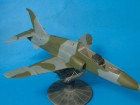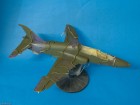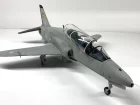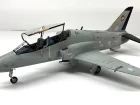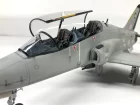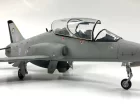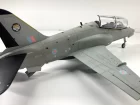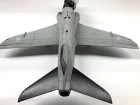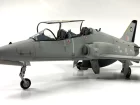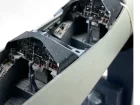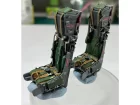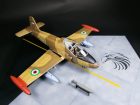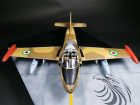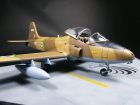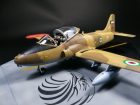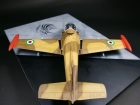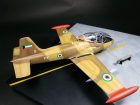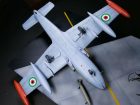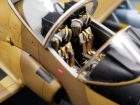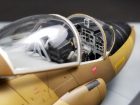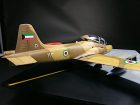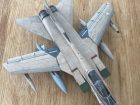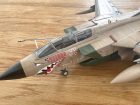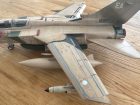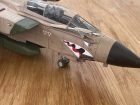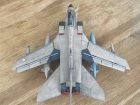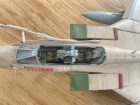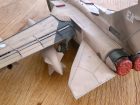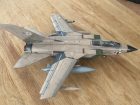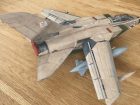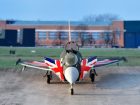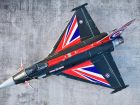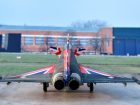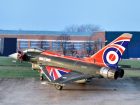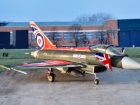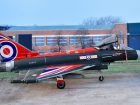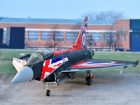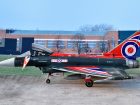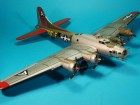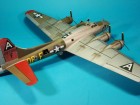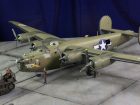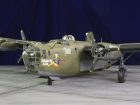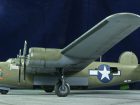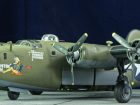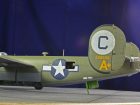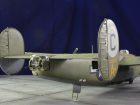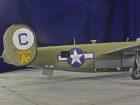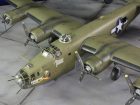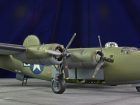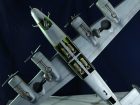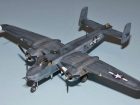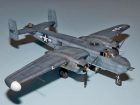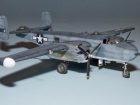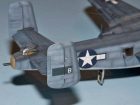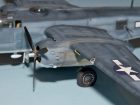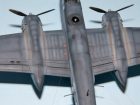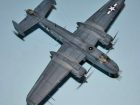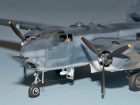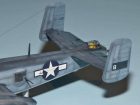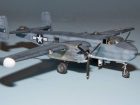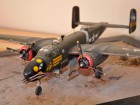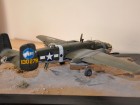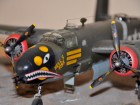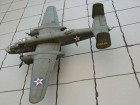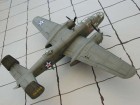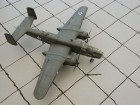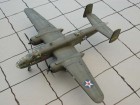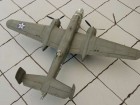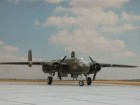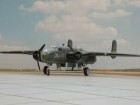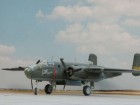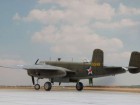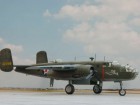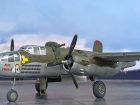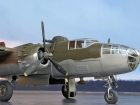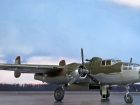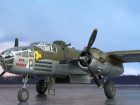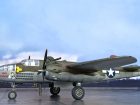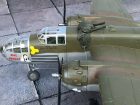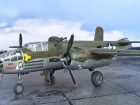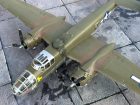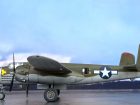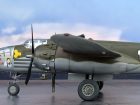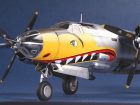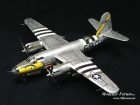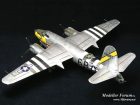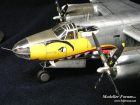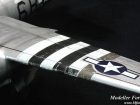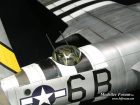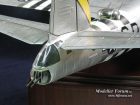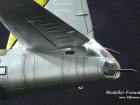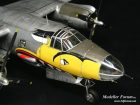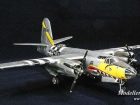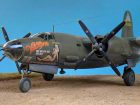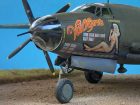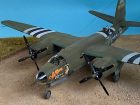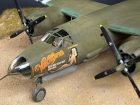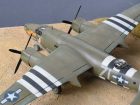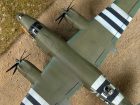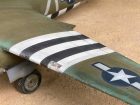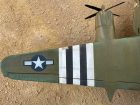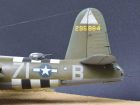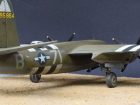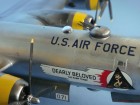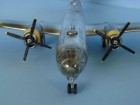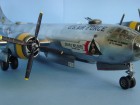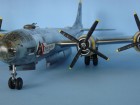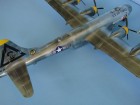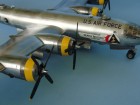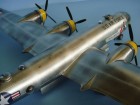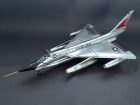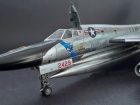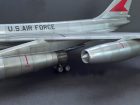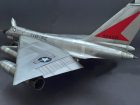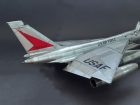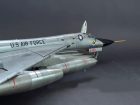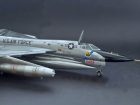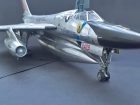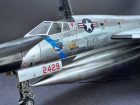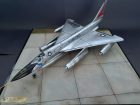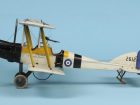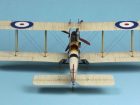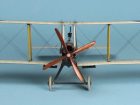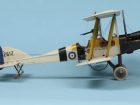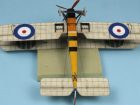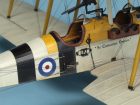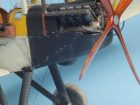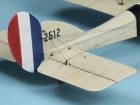Welcome to the Subscribers’ Aircraft Gallery.
Each submission has a ‘gallery’ of thumbnails which you can click on to see an enlarged image and read the short text describing the model – enjoy!
Gallery B
Galleries: A | B | B-2 | C | D-E | F | G | H | I-L | M | N-R | S | T-V | W-Z
I started the kit a year ago (2022) and finished it just after Xmas, the model is all from the box using the kit decals.
I added some detail to the ejection seat using plastic card and Tamiya putty. I used Mr Color paint and varnish to seal it all up, all in all a very nice build but this is a kit that is not for the faint hearted!
Clive B.
The kit uses the base model of the venerable Hawk T Mk.1 model with a few additional parts to enhance the detail. CMK flaps to represent the flaps in the blown position. These were a bit Akers to fit but look really good and with care fit with ease. A metal undercarriage set was used and fixed in place, though it is debatable if this is really required. Paragon MK 10 ejection seats were used and modified to suit the Hawk specification. A Master metal pitot tube was also fixed in place to replace the plastic kit part.
The model was finished using Gunze and Tamiya paints with the 63 Squadron decals being supplied by Xtradecal. The FOD guards were used to cover up the intakes and add a touch of realism with the straps being made from cut lengths of Tamiya tape. The model was finished with Vallejo flat varnish and weathered slightly with pastels.
Italeri GR.4 kit converted to GR.1
After market parts on the Tonka are:
Intake Guards from Trade Winds on eBay
Pitot from Master
3D printed Pylons, JP233, Mk.10 seats early, undercarriage (with metal strengthening) all from IPMS Tornado SIG and available direct from nigelshipp@ntlworld.com
Decals from Revell GR.1 kit.
Les V.
A little while passed and at the beginning of November, I couldn’t resist any longer, so onto scalemodellingnow walk around pages to download the excellent images, as well as inspiration from Geoff’s own rendition of his review model, I was suitably inspired to mate Tamiya thin with Revell plastic!
I treated myself to the eduard Big Ed set of after-market photoetch (most obvious parts on the finished model being their seat belts and landing gear hydraulic lines) and this was incorporated at various stages of the build which progressed well and was straightforward enough for anyone with a modicum of experience. only real additions to the basic airframe were drilling various panels on the fuselage and missile pods to simulate more prominent fasteners and filling the square fuselage panel lines with Mr Surfacer brushed into the panel recesses and rubbed back just to leave a hint of their presence.
When it came to painting, the Revell colour call outs leave a bit to be desired, (with lots of mixing of their own brand of paints) so I consulted lots of photos of the actual aircraft and settled on Tamiya Nato Black for the majority of the airframe with Tamiya flat white for the front canards. I did, however, settle on using the Revell Fire Red gloss for the spine and fin as all my other reds in stock didn’t match the red on the excellent Cartograf decal sheet. AK’s ghost grey and Have Glass Grey were used at various places too. The Jet exhausts were Alclad2 various shades of aluminium and steel plus some jet exhaust thrown i too which was also used on the fuselage APU jet efflux on the wing/fuselage joint.
The Nato Black was given a thorough buffing to produce a shine suitable for the decals which went on fine, but do check your references, as some of the stencils in the instructions (fuselage NO STEP on the wing fuselage joint for example) do not appear on the actual aircraft, but Micro Sol came in handy when removing or repositioning the small stuff.
I had been puzzling over how to paint the elevon leading edges which are quite prominent on the real aircraft and on the Hannants stand at Telford this year, saw some decals in strips of varying widths, they don’t do a light grey colour set, but settled on silver, which also came in handy when adding the windscreen de-icing detail and also the wing to fuselage strip at the inboard root.
A bit of dry brushing around the canopy and electronics and grey filters into the gear bays were the only weathering that was added to this immaculately maintained jet, which was finished by a coat of Johnsons Klear all over (the Union flags, spine and fin are Gloss and then a quick mask up and Alclad Flat sprayed over the black and grey areas to give a nice, even finish.
Any cock-up along the way? Yes, like forgetting to install the fuselage APU inlet, so major fishing required to install that after the fuselage was complete and finally install the main gear legs the wrong way around, which required some careful surgery to correct as you see it now!
Build another?? Too right, but give me a few weeks as I have a brace of Italeri F35s to do in the Marham schemes oh and there is that eduard Tempest 2 oh and the Border 1:32 Lanc staring at me!
Great stuff Revell, good product, accurate and builds into a stunning model!
Stuart M.
A good friend of mine, who is a great B-24 enthusiast and fellow member of the “Friends of the Eighth”, Bob Dance, received this as an Eightieth Birthday present and five years on it was still unmade, so I said to Bob, let me build it for your 85th Birthday!
Luckily, the kit decals included an aircraft which flew with the 389th Bomb Group from RAF Hethel (US Station 114), where Bob still works today as Chief Mechanic with Classic Team Lotus. Bob still runs the same Lotus 25 that he built and ran for Jim Clark when they won the F1 World Championship in 1965!
This was built straight out of the box, being a kit from the mid eighties, panel line detail is raised, but not too obtrusive. The biggest single job was masking the canopy, nose transparency and rear turret glazing, but this was eased by using the excellent Eduard Mask set. Eduard seat belts were also added to the cockpit seats and Bombardier station.
Paints used were Vallejo Chromate Green for the interior, Halford matt black as a surface primer, Tamiya Neutral Grey for the underside, Rubber Black for the tyres and de-icer boots and green-yellow for the prop tips. Xtracolor enamels were used for the Olive Drab on the lower fuselage and Faded Olive Drab for the upper surfaces of wings, tail and upper fuselage blended into the standard Olive Drab.
Exhausts were painted using various shades of Alclad2 and exhaust stains on the upper and lower surfaces also were from Alclad2.
The Cletrac tractor was undercoated black and then Tamiya Khaki Drab used with Olive Drab highlights and finally a light dry brushing with a silver to highlight edges.
Figures were undercoated black and the uniforms dry brushed with khaki and browns with a flesh tone used on faces and hands followed by a brown wash to highlight features.
I made the base from a sheet of Blockboard sprayed with Halfords grey primer, a water based marked was used to highlight joints and then these were over-sprayed with a an acrylic smoke paint to give the surface a texture…this proved to be a very quick method to simulate a concrete pan and only took about 20 minutes from start to finish!
Stuart M.
The only minus was the too small opening in front of the engine cowlings, which was corrected.
I tried to make the boring camouflage a little more interesting by adding some wear and tear; however these birds did not serve very long as all of them crashed purposely after the raid on Japan!
Jürgen Jaacks
The Monogram kit is excellent, fits well and I just wanted to enhance it by:
• re-scribing the raised panel lines
• adding resin wheels
• adding aerial wires from fishing line
• aftermarket decals
• tarpaulin over the upper gun turret from cling film – this works really well.
Really enjoyable build!
Geoff C.
• raised panel lines re-scribed and airframe riveted
• rudder cut out and offset to the left
• front bulkhead scratch built from plastic card (this is missing from the standard kit)
• engines, kit wheels and gun barrels replaced with resin after-market items
• engines detailed with wire & plastic rod
• wing tip lights made from clear plastic sprue; landing lights reworked with lenses from Little Cars
• addition of photo etched seat belts
• apart from the nose art, the yellow serial code & the propeller insignia, all markings were sprayed using Montex masks for the national insignia and home-made masks for the fuselage codes
• the biggest challenge was the fit in the tail gunner area. The work involved sawing off the over-extended ‘horn’ in the transparency and reshaping with Milliput.
Best wishes, Richard C.
This is the Academy 1:72 Boeing B-29A built out of the box, but not without some problems. Construction is pretty straightforward for such a large kit and the interior is particularly well detailed, although you don’t get to see much in the end. The problem started when applying the gloss black undercoat for the Alclad II metal surfaces. After spraying there were some white blooming marks over the nose and up the tail, which left as they were would spoil the metal finish. I suspect this was caused by a change in humidity as I dimly recall a thunderstorm passing though and the air conditioner working overtime, the joys of living in the tropics I suppose?
After an initial attempt at re-sanding the affected areas it soon became apparent that the whole model would have to be tackled again, a daunting prospect, so back into the stash it went to lie there untouched for over a year. Clearing the bench of my last project it was time to clean out the stash (to make room in the cupboard for more recent purchases) and finally deal with this problem. Three days and a multitude of sanding grade papers later it was ready to try again with the gloss black. This time it worked and the Alclad went on a treat.
The base is Alclad II Chrome, followed by Alclad II Polished Aluminium post-shaded across the main panel lines and along the flaps. A final buff with a fine lint free cloth brought out the surfaces and blended everything in. As my first attempt at metal surfaces on such a large project, this was a learning experience.
Sets used:
• turbines from Aires
• pitot tube from Master
• landing gear from Scale Aircraft Conversions and
• atomic bombs B-43A from Brassin.
Painting made with special chrome automotive paint.
Model made to order.
Fernando M.
Lukgraph kit
Tamiya, Alclad and printing ink paints
Prop: oils over acrylic
Weathered with Tamiya and oil paints and VMS pigments
Model Kasten rigging with Gaspatch terminals
Replacement fuselage a big improvement on the cast resin original
Seats also Gaspatch
The rest is from the kit.
David L.
More Aircraft B….
Galleries: A | B | B-2 | C | D-E | F | G | H | I-L | M | N-R | S | T-V | W-Z
